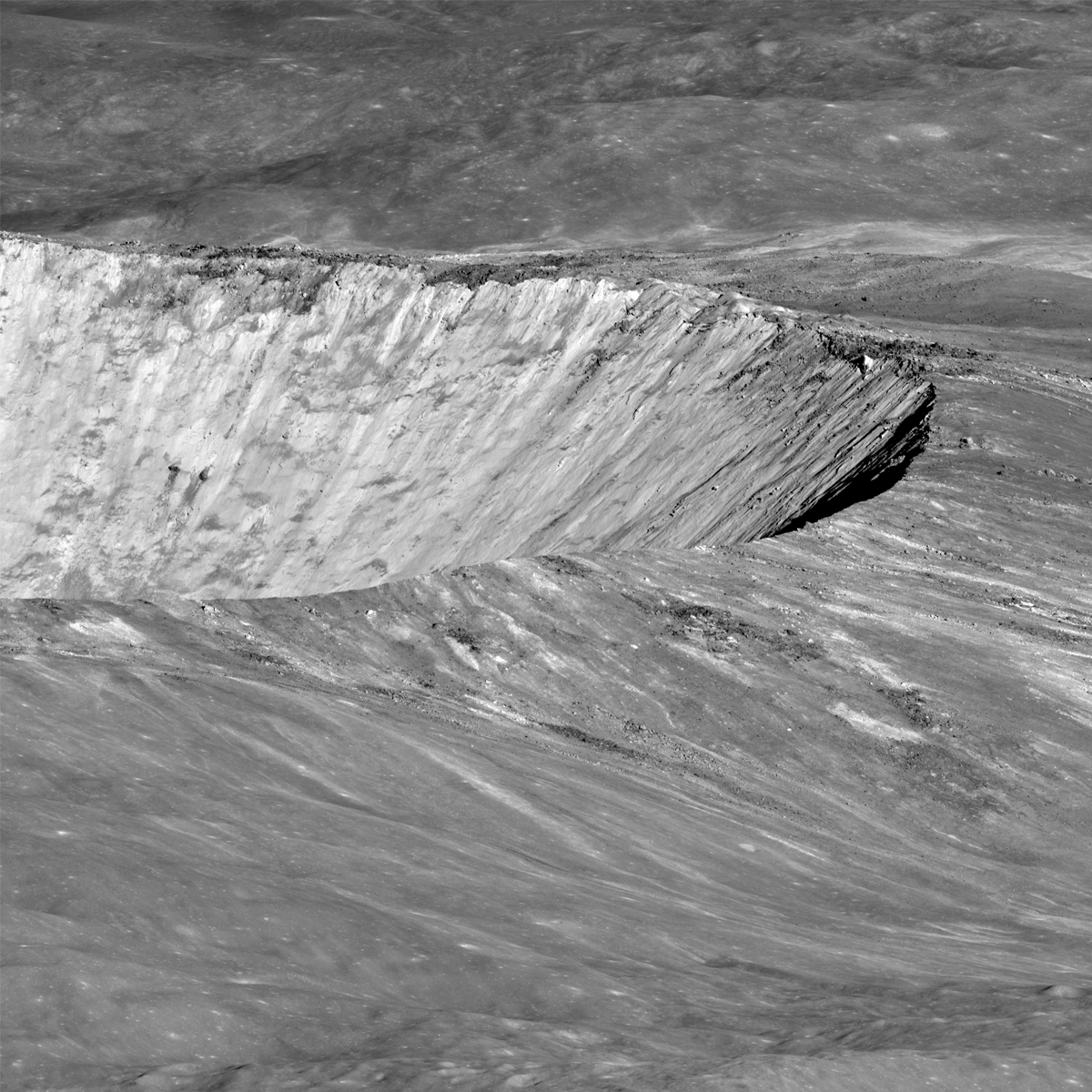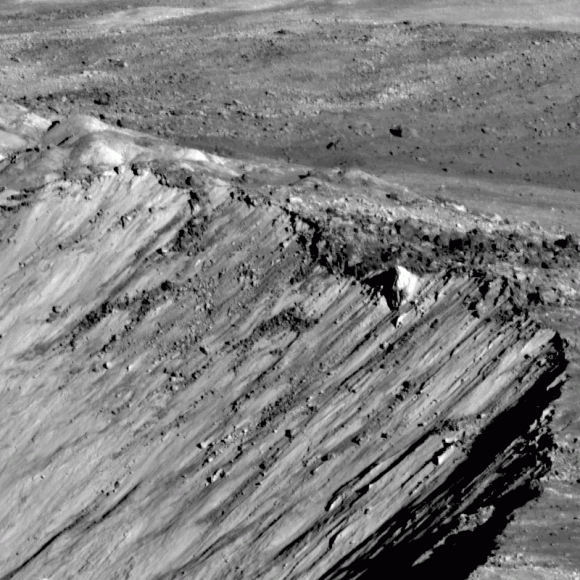Caption: Southern rim of Giordano Bruno crater seen obliquely by LROC. Credit: NASA/GSFC/Arizona State University
At the
2012 Lunar Science Forum
going on this week at the NASA Lunar Science Institute, scientist Mark Robinson presented some new stunning images from the Lunar Reconnaissance Orbiter's cameras (LROC), including this oblique view Giordano Bruno crater, and a wonderful video (below) that allows viewers to "barnstorm" over the crater to witness the stark beauty of this impact basin.
"I could spend weeks and months looking at the preserved materials in the crater," Robinson said, adding that views like this are helping scientists to understand the impact process. "Until astronauts visit Giordano Bruno, this gives a view about as close as you can get to standing on the surface to the west of the crater."
Robinson is the Principal Investigator for LROC, and in his talk today said all systems on LROC are working nominally. "That's NASA-speak for everything is fantastic," he joked.
With the wide angle camera, LROC has mapped the entire Moon nearly 33 times. "Every map has a different photometric geometry, so this is not a redundant dataset," Robinson said, adding that the different lighting provides different ways to study the Moon. "And to be able to do follow-up observations, I can't tell you how great it is."
Just about every month, the science team is able to take new mosaics of both the north and south pole, and they've also found 160 pits – lunar caves – so far. These caves with "skylights" are intriguing because they would offer potential protective habitats for future lunar explorers.
Now in its extended mission, LRO is still going strong, and has provided incredible details of the lunar surface. LRO project scientist Richard Vondrak said since the start of the mission, LRO has uploaded 325 terabytes of data into the Planetary Data System, the digital storehouse for NASA science mission, through June 2012.
Caption: Close-up detail of the rim of Giordano Crater. Credit: NASA/GSFC/Arizona State University
"Thanks to LRO, the Moon's topography is now better understood than the Earth, since two-thirds of Earth is covered by water," Vondrak said. But both scientists agrees LRO is just getting started.
"The Moon is one of the most engaging bodies in the Solar System and we've still got a lot of work to do," Robinson said
Robinson suggests scrolling through all of the details of this beautiful impact crater by looking at the full-resolution version of Giordano Crater -- "not to be missed!" he said. Also, the full resolution version of the video can be downloaded here.
Sources: NLSI Lunar Forum,
LROC website
 Universe Today
Universe Today

